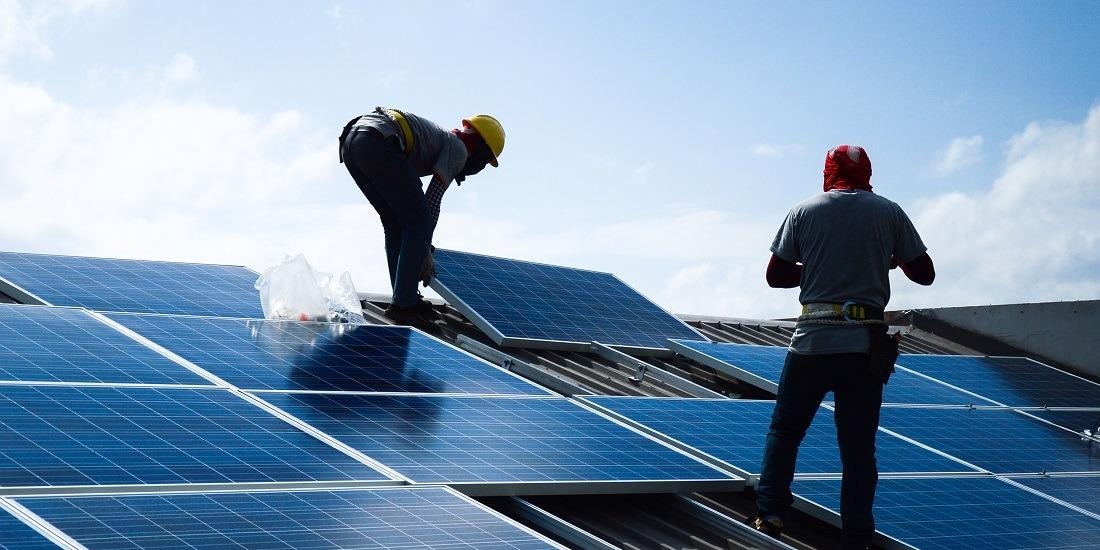A team of researchers from the Norwegian University of Science and Technology (NTNU) has formulated a technique for creating an ultra-high material-efficient solar cell incorporating semiconductor nanowires. If this is positioned on top of a traditional silicon-based solar cell, the efficiency of present-day Si solar cells could potentially double in a cost-effective manner.
 Integrating the product on top of a Si cell can potentially improve solar cell efficiency to as much as 40% - which would mean a doubling of efficiency when compared to today’s commercial Si solar cells. (Image Credit: Shutterstock, NTB).
Integrating the product on top of a Si cell can potentially improve solar cell efficiency to as much as 40% - which would mean a doubling of efficiency when compared to today’s commercial Si solar cells. (Image Credit: Shutterstock, NTB).
We have a new method of using gallium arsenide (GaAs) material in a very effective way through nanostructuring, so we can make solar cells much more efficient using only a tiny fraction of the material that is normally used.
Anjan Mukherjee, PhD Candidate, Department of Electronic Systems, NTNU
Mukherjee is the key developer of the method.
Gallium arsenide (GaAs) is the ideal material for creating high-efficiency solar cells because of its amazing light absorption and electrical features. It is generally used to create solar panels primarily for space applications.
Yet, superior quality GaAs solar cell parts are quite costly to manufacture, which has motivated demand for methods that can reduce the use of the material.
Over the past few years, it has been understood that a nanowire structure can potentially improve solar cell efficiency compared to regular planar solar cells, even if less material is employed.
Our research group has found a new way to make an ultrahigh power-per-weight ratio solar cell that is more than 10 times more efficient than any other solar cell, by using GaAs in a nanowire structure.
Helge Weman, Professor, Department of Electronic Systems, NTNU
The research paper was published in ACS Photonics, a journal from the American Chemical Society.
Pioneering Method
GaAs solar cells are mostly grown on a thick and costly GaAs substrate, which does not allow for any reduction of costs.
Our method uses a vertically standing semiconductor nanowire array structure on a cheap and industry-favorable Si platform to grow the nanowires.
Helge Weman, Professor, Department of Electronic Systems, NTNU
“The most cost-effective and efficient solution is to grow a dual tandem cell, with a GaAs nanowire cell on the top grown on a bottom Si cell, which avoids the use of an expensive GaAs substrate. We have worked to minimize the cost of growing the top GaAs nanowire cell, because it’s the GaAs fabrication cost that is one of the major issues that is currently holding back the technology,” Weman added.
“The tiny footprint of the nanowire structure provides an additional benefit, because it allows for high quality in crystals in the nanowire and in the interface with the silicon. This helps improve the solar cell performance,” said Bjorn-Ove Fimland, a professor from the Department of Electronic Systems.
This technology can be developed directly and economically with applicable investments and industrial-scale R&D projects.
We grow the nanowires using a method called MBE (molecular beam epitaxy), which is not a tool that can produce materials at a high volume. However, it’s possible to produce these nanowire-based solar cells at a large scale by using an industrial-scale tool such as MOCVD (metal organic vapor deposition).
Anjan Mukherjee, PhD Candidate, Department of Electronic Systems, NTNU
By incorporating this product on top of a Si cell, the efficiency of solar cells could be potentially improved to nearly 40% — which is double the efficiency of existing Si solar cells.
Suitable for Space Travel
The scientists say their method can be adjusted so that the nanowires are grown on various substrates, which could pave the way to numerous other applications.
“We are exploring growing this type of light-weight nanowire structure on atomically thin two-dimensional substrates such as graphene. This could open up enormous opportunities to produce light-weight and flexible solar cells that can be used in self-powered drones, micro-satellites and other space applications,” Mukherjee said.
Journal Reference:
Mukherjee, A., et al. (2021) GaAs/AlGaAs Nanowire Array Solar Cell Grown on Si with Ultrahigh Power-per-Weight Ratio. ACS Photonics. doi.org/10.1021/acsphotonics.1c00527.